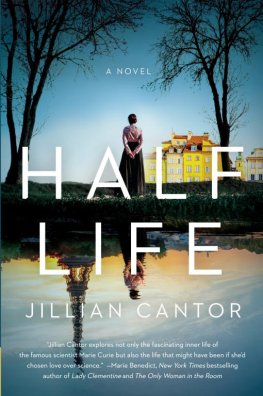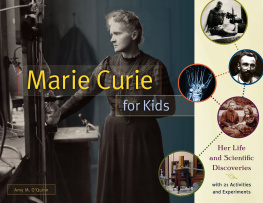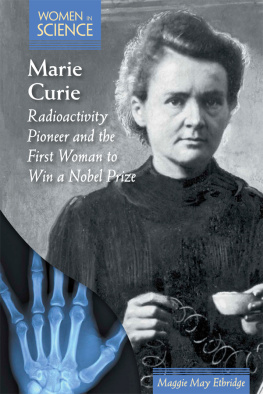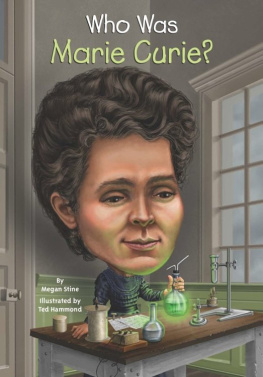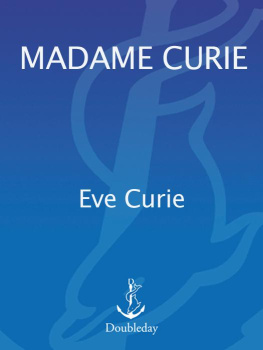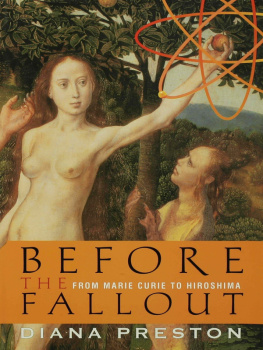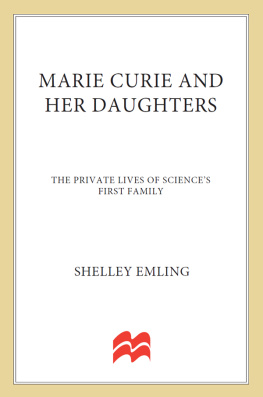Contents
Guide
Marilyn Bailey Ogilvie is professor emerita of the history of science and curator emerita of the History of Science Collections at the University of Oklahoma. She was born in Duncan, Oklahoma, and grew up in Kansas City, Missouri. She has three children and six grandchildren. She received her B.A. degree in biology from Baker University, Baldwin, Kansas, and her M.A. degree in zoology from the University of Kansas, Lawrence, Kansas. She taught in Phoenix, Arizona, for two years and then went with her husband to East Africa to teach for a State Department program, Teachers for East Africa, for two years. Upon returning to the United States with her six-week-old daughter, she studied the history of science at the University of Oklahoma, Norman, Oklahoma, and received her Ph.D. degree from that institution. Her dissertation was on the various editions of the pre-Darwinian evolutionary theorist Robert Chamberss work Vestiges of the Natural History of Creation. She also earned an M.A. degree in library science from the University of Oklahoma. She has taught at Portland State University, St. Andrews College, Minaki (now Tanzania East Africa), Oklahoma Baptist University, and the University of Oklahoma. She became curator of the History of Science Collections at OU from 1991 to 1994, when she became emerita. During this time, she also taught in the History of Science Department and mentored graduate students. As curator, she traveled extensively in Europe during the summers to purchase rare books in the history of science.
She was a distinguished lecturer (2012) and was a member of the Rossiter Prize Committee for the History of Science Society (2011). She received the distinguished teaching award for 1989 at Oklahoma Baptist University (where she was chair of the Division of Natural Science and Mathematics) and the Outstanding Faculty Award from the University of Oklahoma Student Association. She was the editor for Landmarks of Science, project coordinator and academic humanist for the Oklahoma Humanities Committee for seven projects, peer reviewer for NEH and NSF, honorary Phi Beta Kappa (1993), and a member of Omicron Delta Kappa. As curator of the History of Science Collections, she received two grants from the Mellon Foundation and two from the Department of Education. Although she was interested in all aspects of the history of science, she became especially fascinated by the history of women in science. She published over 50 papers and chapters in books, reviewed the works of others, and gave many lectures on this subject.
Her previous books include Women in Science: Antiquity through the Nineteenth Century; A Biographical Dictionary with Annotated Bibliography (1986), Women and Science: An Annotated Bibliography (1996), A Dame Full of Vim and Vigor: A Biography of Alice Middleton Boring, an American Biologist in China (with Clifford J. Choquette, 1999), Biographical Dictionary of Women in Science (2 vols., ed. with Joy Harvey, 2000), Marie Curie: A Biography (2004), Sweeping the Stars: The Story of Caroline Herschel (2008), and For the Birds: American Ornithologist Margaret Morse Nice (2018).
CONTENTS
I. Primary Sources
A. Archival Collections
B. Archival Material
C. Published Works
a. Correspondence
b. Conferences at Which Curie Discussed Her Research
c. Editions and Translations of Curies Doctoral Dissertation
d. Publications during Curies Lifetime
e. Posthumous Publications
f. Editions and Translations of Curies Biography of Pierre Curie
II. Secondary Sources
A. Curie in Context: Works That Situate Marie Curie in Place, Time, and Gender
B. Scientific Predecessors and Colleagues
C. Biographical Works That Emphasize Curies Scientific Achievements
D. Biographical Works That Emphasize Curies Personal Life
INTRODUCTION
Although many books have been written about Marie Curies life, her actual published output, while exceedingly important, was not as prolific as, for example, that of Charles Darwin. No complete bibliography of Curies works exists. With few exceptions, her publications were first published in French; however, they were soon translated into other languages, including Polish, English, and German. Although most of the entries included in this bibliography are in English, it also includes selected works in the original language. The first section of this bibliography includes works by Curie herself, both unpublished and published. The unpublished source section, listed under Archival Collections and Archival Material, does not purport to include all of the manuscript sources. The Curie archival material presents a unique barrier for the researcher since much of the material is radioactive even many years after her death. An investigator would find many of Curies notes sealed in a lead-lined box in the French National library, the Bibliothque Nationale. In order to examine these manuscripts, the researcher is required to sign a liability waiver. As letters by Curie emerged, they were soon printed. A sample of these published letters, both personal and professional, is included in this bibliography. The citations are arranged by publication date, not by the date the letters were originally written. Following the correspondence section, editions and translations of Curies seminal work, her 1903 doctoral dissertation, are also arranged chronologically. Following this listing, other important publications by Curie are listed alphabetically.
Unlike the relatively modest number of Curies actual publications, the secondary literature about her is immense. Undoubtedly, she is of great importance to the development of modern science. However, the fact that she was a woman successfully flouting the mores of her time regarding the traditional roles of wife and mother made her a prime subject for biographies. Her success in negotiating these diverse tasks suggested the possibility that a woman could be a highly successful scientist without abdicating traditional female responsibilities. Curie became a cultural icon. She is seen as that unusual person who successfully combined the roles of scientist, wife, and mother. When asked to name an important woman scientist, the first name that comes to mind is that of Marie Curie. She managed this difficult task through what Helena M. Pycior describes as her anti-natural path. This path involved both Marie and Pierres decision to concentrate only upon the essentials of life, which for them were science and their extended family. They were uninterested in traditional activities such as fashion. They had only sparse, utilitarian wardrobes, and they possessed only the necessary furniture. Their social ties were meager and seldom went beyond their extended families and a few selected scientists. They pared down family life to the barest essentials. After daughter Irne was born, several fortuitous events made it possible for Marie to continue with her scientific work. Pierres father, Dr. Eugne Curie, took over much of the role of child care and, after the death of Pierre, made it possible for Marie to continue in the difficult position of an independent scientist and professor and single parent of, by that time, two little girls. These factors partially explain the great number of popular biographies of Curie. There are biographies of all kinds in many different languages, including scholarly biographies, popular biographies, and childrens biographies.
The second main section of this bibliography lists secondary sources. Books and monographs, articles in periodicals, and chapters in books about Curie and her environment are interfiled in alphabetical order under subject headings. The first and second subdivisions place Curies life and work in context, addressing the works of her scientific predecessors and contemporaries, world politics, women in science, and the state of university education. Biographies of Curie make up the greater part of this bibliography. They vary greatly, from beautifully researched productions to popular works, including childrens biographies, coloring books, and photographs. Although it is impossible to separate Curies scientific life from her personal life, certain works stress her scientific achievements more than her personal life, whereas others emphasize the personal over the scientific. Recognizing that these two aspects of her life are intertwined and that dividing them is artificial, this bibliography nevertheless separates the works that stress her scientific life from those that emphasize her personal life. Curies scientific works were a vital part of a revolution in physics and chemistry in the late 19th and early 20th centuries, and consequently those works that emphasize her scientific importance are listed first, although all of the entries note ways in which her science and personal life intersect. Because of Curies unique position as a woman scientist with children, her way of managing home life and career is of interest to historians of women in science, and some of the biographies address this aspect of her career.


